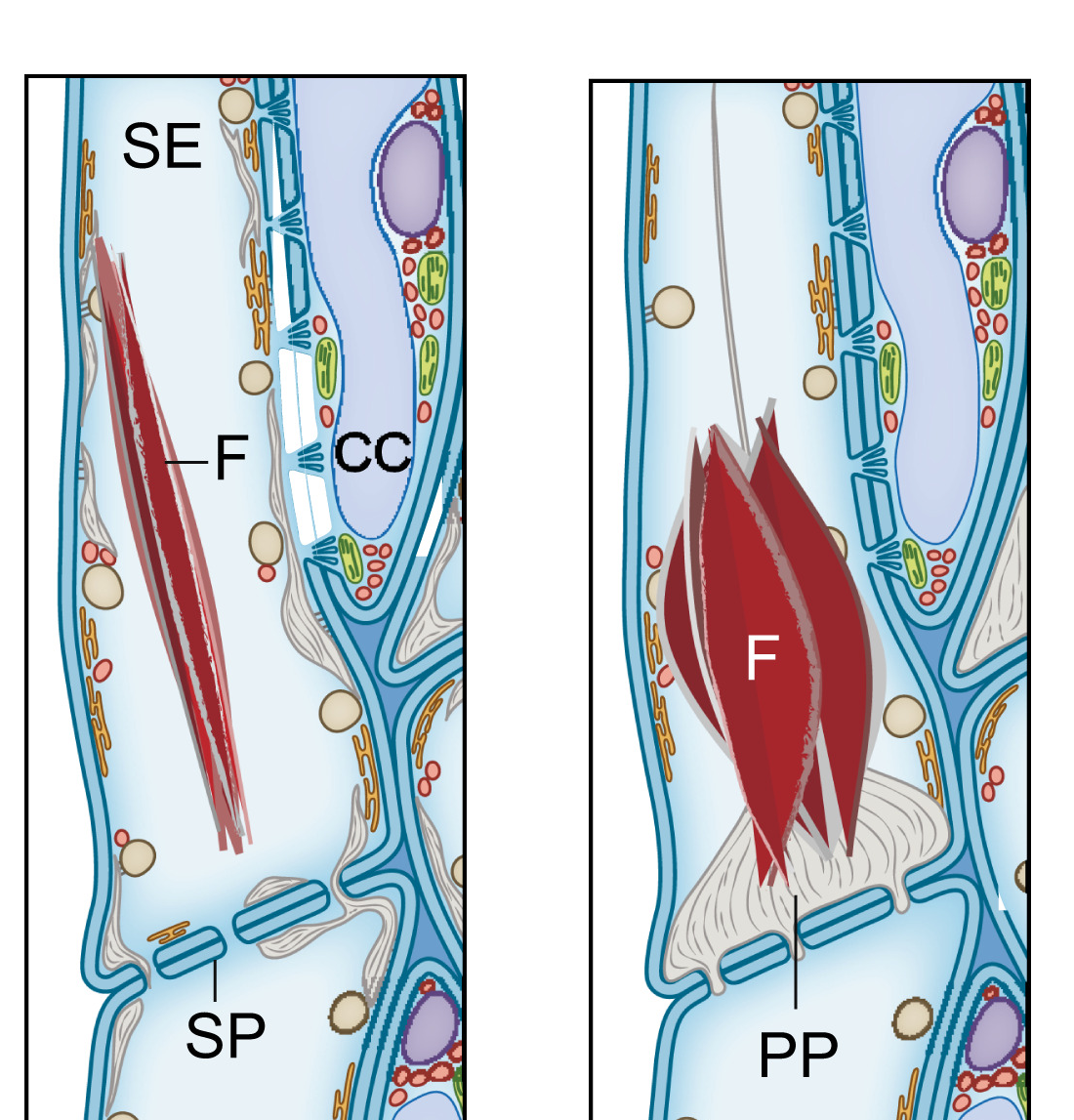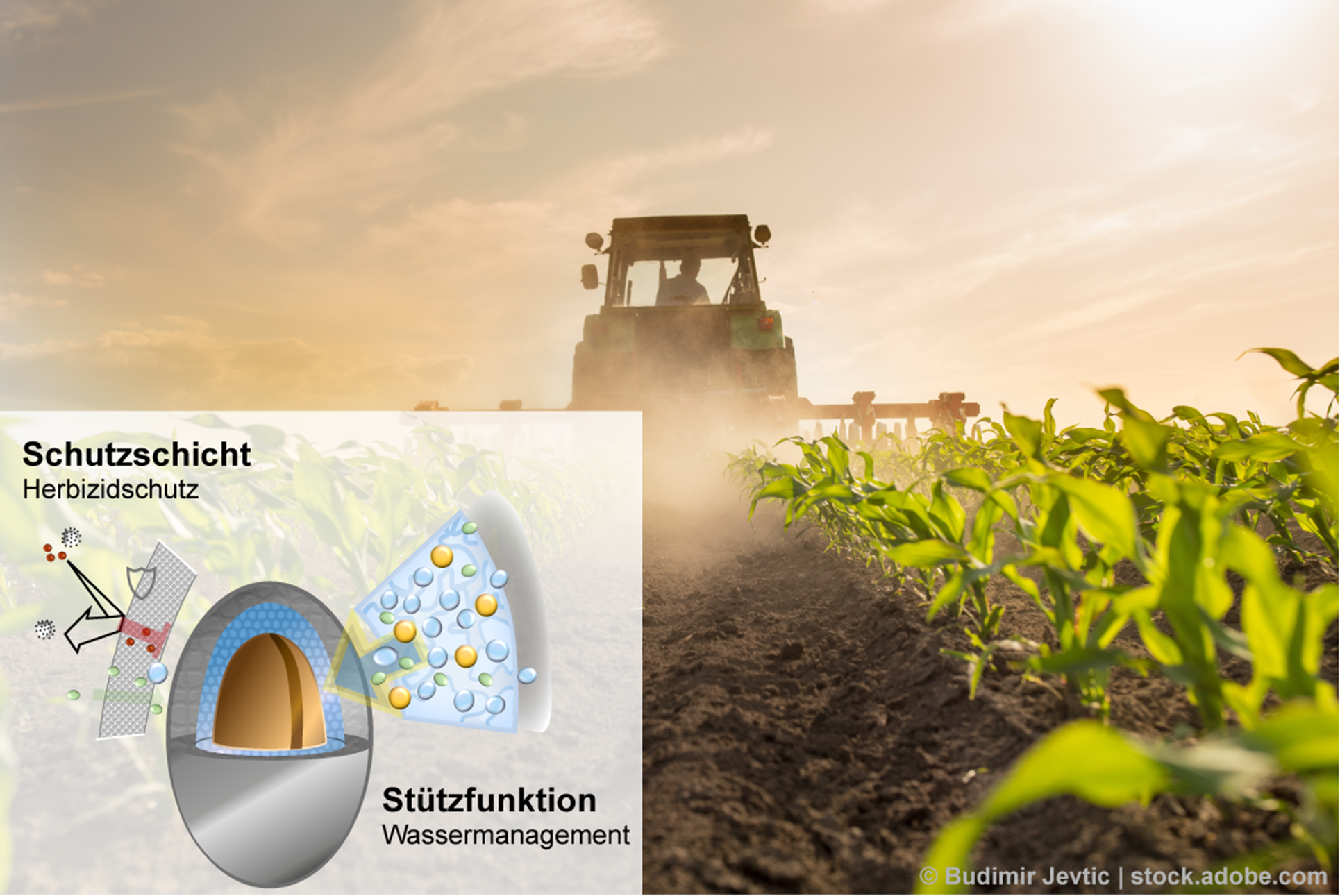The United Nations designated 12 May the International Day of Plant Health to raise global awareness on how protecting plant health can help end hunger, reduce poverty, protect biodiversity and the environment, and boost economic development.
To feed the world by 2050, we need a 50 percent increase in agricultural production. Protecting agricultural crops from pest outbreaks is paramount. As each year, we lose up to 40 percent of crops, worth 200 billion euros, to plant pests and diseases.
International Day of Plant Health
Our research and development projects in plant health - some examples
Plant self defense

Cuticular wax in pathogen defense
Waxes on the plant surface (cuticular waxes) play a crucial role in stress responses such as pathogen attack and fruit quality. Our understanding of the different composition and genetic mechanisms underlying cuticular wax formation in grapevines remains limited. Therefore, the aim of this study was to characterize the composition of cuticular waxes and to identify the genes involved in their biosynthesis. DOI
Physiochemical interaction between osmotic stress and a bacterial exometabolite promotes plant disease
The study reveals that Brassicapeptin A plays a key role in disease development and that the physiochemical interaction between environmental stressors and bacterial metabolites is crucial for understanding plant diseases in complex soils. The team uncovered novel mechanisms of microbial pathogenicity, with far-reaching implications for sustainable agriculture and plant resilience in saline soils.


Structural phloem proteins
The Phloem plays a crucial role in transporting the products of photosynthesis throughout the plant. However, it faces threats from injuries, pests, parasites, and pathogens. To counter these threats, plants have evolved efficient defense mechanisms, including structural phloem proteins (P-proteins). These proteins help in sealing damaged sieve elements and protecting the plant from pathogens. Understanding the role of P-proteins in plant defense, will enable phloem engineering as a new strategy for developing crop varieties that are resistant to pests, pathogens, and parasites.
A recent multidisciplinary study in collaboration with researchers at Fraunhofer IME in Münster, explores how plants convert pathogen perception into electrical signals, triggering local and systemic defense responses. Surprisingly, the evidence indicates that sieve element occlusion proteins, previously thought to be mainly involved in phloem sealing, also contribute to the signal transmission process.

Immunity cell-surface receptors
Plants recognize hostile microbes by detecting molecular patterns within pathogen virulence effectors. The immunity cell-surface receptors Ve1 and Ve2 protect plants against fungi of the genus Verticillium, which cause early blight, a worldwide disease affecting many crops. Transgenic plants expressing Ve1 and Ve2 together reduced pathogen titres by a further 90% compared to plants expressing either Ve1 or Ve2 alone. Bioassays show that the Ve1Ve2 complex activates race-specific enhanced immunity to the pathogen through a rapid burst of reactive oxygen species (ROS). These results suggest a mechanism by which the composition of a cell surface receptor heterocomplex can be optimized to enhance immunity to devastating plant diseases.

Natural rubber reduces herbivory
Taraxacum koksaghyz is an emerging alternative rubber crop grown in Europe, where it could be attacked by the herbivorous soil-dwelling May cockchafer larvae. A recent study investigated the effects of cis-1,4-polyisoprene, a major component of natural rubber, on plant resistance against herbivory and root microbiome. The results showed that plants with reduced rubber content suffered greater biomass loss in the presence of herbivores than plants with normal rubber content. When May cockchafer larvae were fed a diet with varying levels of rubber in the latex, the herbivores showed a preference for feeding on the diet supplemented with rubber-depleted latex. In addition, adding purified cis-1,4-polyisoprene to the diet deterred larval feeding and reduced their weight gain.

Strengthening of pathogen resistance
Pests cause significant losses in potato harvests worldwide, which is why the BMEL-funded ADLATUS project aims to improve the potato's resistance to important pathogens. With the help of new host factors and existing defense mechanisms, the resistance of potatoes to viruses and nematodes in particular is to be strengthened and yields secured in the future. The focus is on important quarantine and non-quarantine pathogens such as root gall nematodes (Meloidogyne chitwoodi), potato virus Y, potato leafroll virus and tobacco rattle virus.
Strengthening plants
Coating with effect
Our SeedPlus technology promotes plant health with tested, environmentally safe materials. Whether protection, water supply, nutrients or growth promoters: Together with its partners, Fraunhofer IME develops demand-oriented, scalable solutions for a wide range of applications. The development process includes extensive testing to assess the risk of the coatings - for healthy plants from the start.
Pathogen detection

Pathogen detection by isothermal amplification
Potato plants are susceptible to a number of economically important viruses that can affect tuber quality and reduce yields by up to 50 percent. One of the biggest threats is viral iron spot: A tuber necrosis caused by the tobacco rattle virus (TRV) and transmitted by nematodes.
The BMEL funded TRV2GO project has therefore developed a simple, stable and sensitive detection method that can be carried out without special equipment, making it suitable for practical use. The diagnostic method is based on isothermal amplification of viral gene segments combined with specific detection of the amplification products using a lateral flow dipstick.
more info
MagnI-SENSE: Magnetic immuno-sensor technology and cloud-based expert system to ensure sustainable agricultural yields
The aim of the joint project "MagnI-SENSE" is to develop an innovative analysis and monitoring system for farmers. This will include on-site analysis based on functionalized magnetic nanoprobes and DNA amplification as well as an individual advisory concept with AI-supported prognosis for pathogen infestation. This will enable farmers to reduce the use of pesticides, maximize crop yields and save costs in addition to the positive ecological aspect. The concept is being tested using selected fungal cereal pathogens.

Magnetic immunodetection
The project "Nanoprobe-based screening method for plant pathogen detection" (NanoSPoD) focuses on the quarantine pathogen tomato brown rugose fruit virus (ToBRFV), which leads to major crop losses in tomato and bell pepper plants. In order to limit its spread, a rapid mobile test system is to be developed for inspection authorities such as the chambers of agriculture. In our detection method, viruses are specifically labeled using antibody-coupled magnetic nanoprobes and the amount of virus is determined using a mobile handheld measuring device via the magnetic measurement signal. After a short sample preparation, on-site analyses can be performed within a few minutes, which represents a major time advantage over laboratory diagnostics.
Pest control
Microorganisms for the control of phytopathogenic fungi
The climatic changes of our time are intensifying weather extremes, which in turn leads to multidimensional plant stress. Under the influence of long periods of heat and drought as well as extreme precipitation, native and new plant pests are on the rise. These include fungal pathogens that impair the yield security of staple foods in organic and conventional agriculture. The development of resistance to these pathogens is confronting agriculture with increasing problems. Alternative antifungal plant protection products are needed.
Development of environmentally friendly insecticides based on dsRNA
The most important weapon in the fight against insect pests are insecticides, which have been heavily criticised for their harmful effects on the environment. The development of new, sustainable pesticides is therefore becoming increasingly important. The Fraunhofer Institute for Molecular Biology and Applied Ecology IME, Bioresources (IME-BR) is facing up to this challenge and is focussing on the development of selective and therefore sustainable pesticides based on double-stranded RNA (dsRNA).
»ViVeBeet«
To ensure an adequate yield during the sugar beet harvest, the beet must be protected from various pests during the growing season. These include harmless aphids, which can, however, transmit viral diseases. The Fraunhofer IME is pursuing the approach of constructing a double-stranded RNA molecule specially tailored to aphids, which is applied in a suitable formulation by means of crop protection sprays in order to protect sugar beet from yellowing viruses in the future.
»ProBioControl«
Conventional agriculture in Germany is responsible for almost all of the pollution of the environment with chemical pesticides. At around nine kg/ha/year, the use of these PPPs leads to a loss of biodiversity, the destruction of habitats and the manifestation of pesticides in food chains. In addition, agriculture causes 7.5% of German greenhouse gas emissions and is therefore a driver of climate change. The rate of biodiversity loss and global warming have already exceeded a critical limit. This leads to extreme climatic events such as longer and more frequent dry periods and heavy rainfall, weakening German ecosystems. In this tense situation, plant pests are on the rise. In order to counteract these developments, a transformation and reorientation of agricultural systems towards bioeconomically compatible, sustainable food production is essential.
Efforts to promote organic farming are an essential part of this.However, this form of cultivation in particular lacks pesticides to combat plant pathogens.Fungal diseases are a major factor in high yield losses in organic farming.A range of organically applicable biocontrol agents are available on the market, but in many cases there is a lack of knowledge about their exact mode of action.The aim of the project is to identify and characterise microbial strains that can be used as antifungal biocontrol agents.
Double threat: The role of the reed glasswinged cicada in the spread of two plant pathogens in potato fields
The reed glasswinged cicada Pentastiridius leporinus acts as the main vector for two bacterial pathogens in potato fields. The pathogens, the γ-proteobacterium ‘Candidatus Arsenophonus phytopathogenicus’ and the stolbur phytoplasma ‘Candidatus Phytoplasma solani’, cause the disease syndrome ‘basses richesses’ (SBR) in sugar beet. This syndrome leads to yield losses and a reduction in sugar content. Symptoms such as wilting of leaves and rubbery tubers were already observed in potato fields colonised by P. leporinus in 2022. The transmission of Arsenophonus was confirmed in a previous study by Fraunhofer IME (Behrmann et al., 2023). Subsequently, the spread of both pathogens in south-west Germany was monitored in 2022 and 2023. This led to the widespread discovery of Arsenophonus. It was found that colonisation had already occurred before 2022, when the pathogen was first detected in potatoes. In 2023, the spread of Stolbur in potatoes had increased, while the spread of Arsenophonus was similar to 2022 and 2023. As a result, the adult P. leporinus can transmit both pathogens to potatoes. The results emphasise the need for effective control strategies against both pathogens and their vector P. leporinus.
Pests and vector insect control
Insect pests are responsible for up to 30 % of the worlds` total crop loss, with an estimated economic damage exceeding €500 billion annually. This threat is expected to increase with climatic changes, increased travel activities and globalized trade as key factors promoting the dispersal of invasive pests.
Plant protection is an arms race since insect pests are becoming rapidly resistant against insecticides. In addition, continued regulatory restriction of available compounds on the market, is diminishing grower options to prevent crop damage caused by insects. The mission of the department "pests and vector insect control" is to develop new and environmentally friendly strategies for plant protection.

Taming the Devil‘s ringlet – investigation of the flowering time control of Cuscuta spp.
Devil's ringlets, also known as Cuscuta, are annual holoparasites that survive by sucking water and nutrients from their host plants. When they infest crops, they often cause high yield losses. The plants also produce large quantities of seeds that can survive in the soil for several years, making them a double threat to global agriculture.
Understanding the flowering induction of the parasite may be a key to its control.
 Fraunhofer Institute for Molecular Biology and Applied Ecology IME
Fraunhofer Institute for Molecular Biology and Applied Ecology IME








